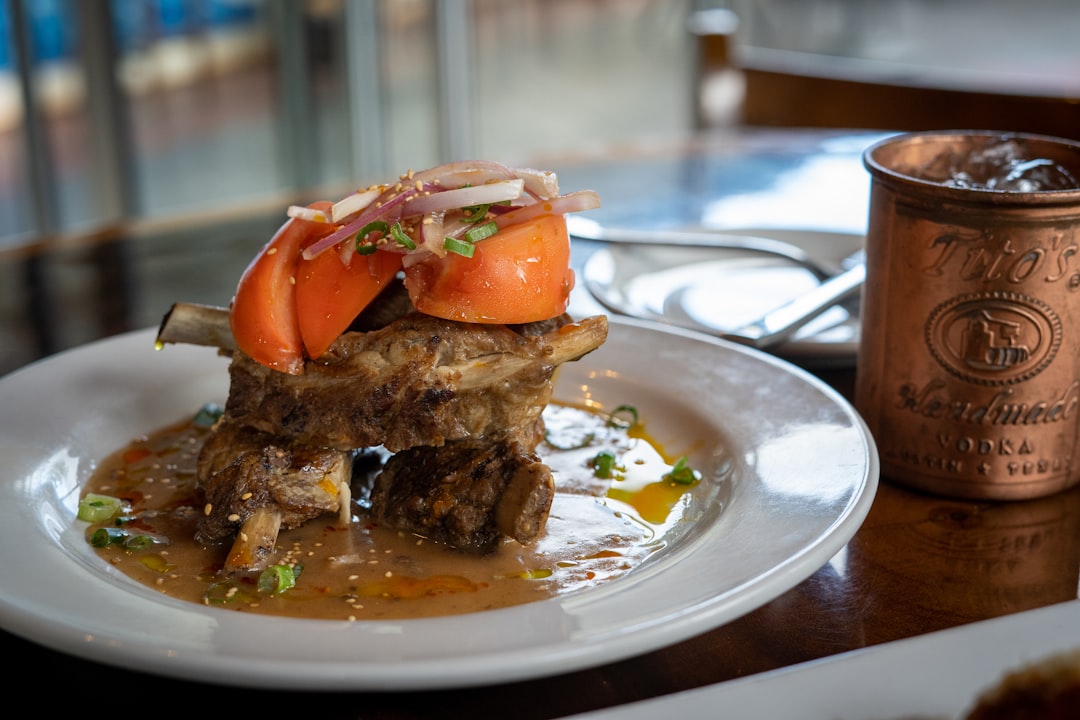Adobo
This traditional delicacy consists of a variety of meats - usually chicken and pork - being simmered in a mixture of soy sauce, vinegar, garlic, bay leaves and black pepper. This rich and hearty concoction is then cooked until the meat is tender, giving it its signature flavor and umami taste.
The beauty of adobo lies not only in its taste and texture, but also in its ease of preparation. It's an incredibly simple dish to make, requiring little effort or expert knowledge. All that is required is to combine the ingredients, bring it to a simmer, let it seethe and stew to perfection, before being served with steamed rice as the perfect accompaniment.
The history of adobo is steeped in Spanish influence. The name itself is derived from the Spanish word 'adobar' which literally translates to 'marinade'. It's believed that the Spaniards brought the recipe with them in the 16th century when they arrived in the Philippines and began experimenting with the local cuisine. This explains why the dish is still so popular today and has become ingrained in Filipino culture.
Adobo is a robust and robusteous dish which brings people together. From family gatherings to large feasts, this delectable meal never fails to amaze and delight. Plus, it doesn't require too many fancy ingredients, making it an economical choice for anyone looking to whip up a sumptuous yet easy-to-make meal.
If you haven't yet experienced the wonders of Adobo, be sure to give it a try! You won't be disappointed.
Adobo recipes
Amazing Adobo recipes sourced from the web.
The origin of Adobo
The genesis of Adobo is a tantalizingly complex one, replete with competing narratives and historical speculations. Although the exact origin of this famed Philippine dish is debatable, its significance and ubiquity are unquestioned.
Adobo’s story begins with Spain’s colonization of the Philippines in the 16th century; prior to this, the inhabitants of the archipelago had few culinary traditions involving meat and instead relied heavily on plant-based sources of sustenance. With the influx of Spanish soldiers and foodways, the practice of marinating and cooking meats in vinegar and spices was encouraged. This profuse use of a fermented brine solution, known as adobo (or “pickling”), enabled large numbers of people to preserve and store food for extended periods of time.
Over the centuries, adobo evolved into what we now recognize as the quintessential Filipino dish, a savory blend of meats, soy sauce, garlic, bay leaves, and other ingredients that can be cooked in several ways. While there are many incarnations of adobo, they all contain a signature blend of vinegar and an intense blend of spices, including but not limited to ginger, black pepper, turmeric, and numerous other herbs and spices.
Adobo is an iconic dish beloved by generations of Filipinos, who celebrate its comforting and familiar flavors at every turn. It has since been embraced worldwide, inspiring countless food enthusiasts to explore its unique flavor profiles. No matter where it came from, Adobo will remain a popular staple of Philippine cuisine for centuries to come.
Types of Adobo
Adobo, an iconic Filipino dish, is an absolute must-try for anyone looking to experience the country's unique culinary heritage! With a wide variety of styles and flavors, Adobo dishes offer something special for every palate.
Traditionally, Adobo involves marinating meats such as chicken, pork or seafood in a blend of vinegar, garlic, bay leaves, black peppercorns, and soy sauce. This infusion of tangy, salty flavors results in a succulent dish with its own distinct taste. However, there are countless variations on this beloved classic.
The most popular type of Adobo is Chicken Adobo, featuring pieces of tender chicken cooked slowly in a mix of vinegar, soy sauce, garlic, and other spices. It's a simple but hearty dish with an unmistakable flavor that Filipinos have been enjoying for decades. Other variations include Pork Adobo, which is made with pork shoulder or pork belly cooked in the traditional marinade, plus vegetables. A particularly rich version of the dish is Dinuguan, a decadent pork stew featuring offal and a thick gravy made with pork blood. For seafood fans, there's Inihaw na Pusit (Grilled Squid Adobo), a flavorful twist on the classic that's commonly served as a street food.
Vegetarians can also enjoy their own version of Adobo. Tofu Adobo is a delicious dish made with cubes of tofu that have been marinated in a savory blend of vinegar and spices. This delicious meat-free option appeals to those looking for a cruelty-free way to enjoy this classic Filipino dish.
No matter your preferences or dietary restrictions, there's an Adobo dish that's sure to tantalize your taste buds! The next time you’re in the Philippines, don’t miss out on the chance to savor this unique, savory delicacy.




